Trang Tien Street, located in the illustrious Hoan Kiem District of Hanoi, is more than just a thoroughfare; it is a living testament to the city’s rich tapestry of history, culture, and modernity. As the pulse of Hanoi beats along this vibrant street, it showcases a compelling blend of architectural marvels and cultural institutions that encapsulate the essence of Vietnamese life. From its humble origins during the French colonial period to its current status as a bustling commercial center, Trang Tien invites exploration and discovery at every corner.

Walking down Trang Tien is akin to embarking on a historical journey. The street stretches approximately 710 meters, running from Tran Quang Khai dyke road to the bustling area near Hoan Kiem Lake. It stands as a cultural artery, connecting various districts and neighborhoods while providing a focal point for both locals and tourists alike. As one meanders through this lively street, the charming cafes and boutiques coexist with the echoes of significant historical events, including revolutionary rallies and rich traditions, making each step resonate with centuries of history.
In the heart of Hanoi, where the old meets the new, Trang Tien Street emerges as a vibrant theatre of daily life a culinary haven, a shopping paradise, and a cultural jewel. As the sun sets, the street transforms, revealing an illuminated mosaic of activities that ranges from street vendors preparing local delicacies to shopkeepers curating their collections of the finest goods. This dynamic setting allows for the exploration of not just tangible offerings but the intangible heritage that informs the very fabric of Vietnamese culture.
Moreover, as we delve into the historical significance of Trang Tien Street, we unveil stories of resilience, change, and myriad cultural exchanges that have shaped Vietnamese identity. It is not merely a location, but a space where stories unfold, making it a crucial aspect of understanding Hanoi’s broader historical narrative. As we explore the various dimensions of Trang Tien Street, its history, architecture, and cultural offerings, we encourage you to embrace its layers, each contributing to the unique character of this fascinating street.
The Historical Significance of Trang Tien Street
The historical significance of Trang Tien Street stretches far beyond its location; it is a microcosm of Vietnam’s turbulent yet transformative journey through time. Often described as the “beating heart” of Hanoi, this street has served multiple roles throughout its existence. Think of it as a grand stage where important historical events have played out where the passions of a nation have been expressed, and the whispers of the past still echo through the buildings that line its path.

In the days of the Nguyen Dynasty, Trang Tien was notable for its role as the mint for coinage, underpinning the economic foundations of that era. This aspect is reminiscent of the way roots nourish a tree, grounding it amidst the winds of change. Fast forward to the colonial era, when French colonial architecture began to dominate the landscape, and the street became a prominent center for cultural and social gatherings. Adjusting to the changing tides of time, Trang Tien was not just a venue for leisure; it became a battlefield where revolutionary fervor ignited amidst heated political discussions.
As we reflect on its history, we must also celebrate the resilience that defines this iconic street. From the celebrations heralding independence to today’s contemporary festivals, Trang Tien continues to evolve while holding fast to its rich narrative. It reminds us that even in the face of turmoil, there exists beauty and vibrancy, inviting us all to partake in the journey of discovery.
Origins of Trang Tien Street and Its Historical Context
The origins of Trang Tien Street can be traced back to the late 19th century when Vietnamese society was on the brink of substantial change. Originally known as Rue Paul Bert, the street was named after the French governor general of Indochina, reflecting the colonial influence that permeated all aspects of daily life during that time. Like a canvas painted with vibrant hues, it witnessed various developments that shaped its character, akin to how colors blend to create a mesmerizing masterpiece.

The transition to its current name, Trang Tien, came after the liberation of Hanoi in 1954, marking a new chapter in its narrative. It is interesting to note that this street, with its intricate history, served as a stage for many pivotal events, particularly during the August Revolution in 1945. Imagine a wave crashing upon the shore, strong enough to reshape the landscape this revolution, where people rallied on Trang Tien Street, was such a wave that altered Vietnam’s course forever.
During the French colonial period, Trang Tien also became a hub for administrative activities, housing various governmental offices and institutions. The street served as a social platform for both locals and expatriates, linking different cultures and fostering a sense of community despite the prevailing disparities. In a way, it reflects the ongoing dialogue between populations, where aspirations and dreams intertwine.
In the modern context, Trang Tien has become synonymous with French neoclassical architecture and urban commercial spaces. The juxtaposition of historical significance and modern allure creates a stunning landscape that reflects Hanoi’s growth. Just as a bridge connects two shores, Trang Tien Street links the rich historical past of Vietnam with its dynamic future, serving as a beacon of resilience and hope.
Key Historical Events Associated with Trang Tien Street
Trang Tien Street has borne witness to a multitude of historical events that are woven into the fabric of Vietnamese cultural identity. One of the most impactful moments occurred during the August Revolution of 1945. On August 19 that year, a massive rally unfurled along the street, symbolizing the unity and indomitable spirit of the Vietnamese people as they rose against French colonial rule. This event can be likened to a spark igniting a wildfire, for it galvanized a nation toward independence and social change.
- August Revolution of 1945: This significant uprising was fueled by a desire for freedom, and Trang Tien Street served as a catalyst for revolutionary activities. The spirit of the rally, much like the powerful flow of a river, cascaded through the city, inspiring camaraderie among the masses who sought liberation from oppression.
- Cultural and Political Hub: Over the years, the street emerged as a cultural and political focal point. Key discussions regarding independence and nation-building took place here, fostering a sense of identity and purpose among the locals. Today, echoes of past gatherings of political significance still linger in the air, allowing visitors a glimpse into the struggles and triumphs that shaped Vietnam.
- Legacy of Art and Performance: Trang Tien Street is also home to many performances and cultural displays that contribute to Vietnam’s artistic legacy. Events at the Hanoi Opera House and other cultural institutions enliven the street, creating an atmosphere reminiscent of a festival celebrating the nation’s artistic expressions, demonstrating how past events continue to inspire contemporary Vietnamese culture.
These significant historical markers not only highlight the importance of Trang Tien Street in Vietnam’s journey towards independence but also serve as powerful reminders of the sacrifices and struggles endured by generations past. Each event contributes to a narrative that connects present and future generations, ensuring that the lessons learned from history remain alive in collective memory.
Key Landmarks Along Trang Tien Street
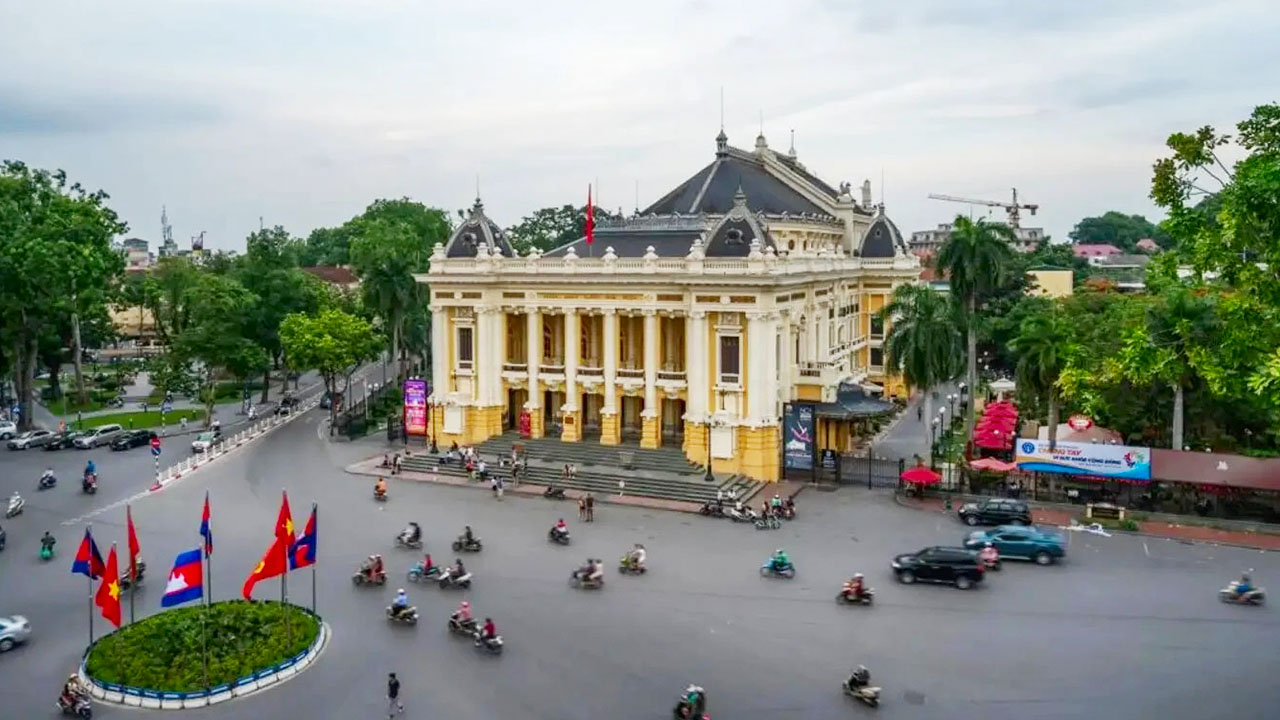
As one strolls along Trang Tien Street, it transforms into a captivating gallery of architectural grandeur and cultural significance. The landmarks that dot this historic boulevard are reminiscent of a narrative tapestry, each thread telling a story about the resilience and aspirations of Hanoi’s people.
- Hanoi Opera House: One cannot speak of Trang Tien Street without mentioning the ravishing Hanoi Opera House, a jewel of French neoclassical architecture. Established in 1911 and inspired by the Paris Opera, it stands out due to its ornate façade and majestic columns. The Opera House has historically been a venue for performances that enrich the cultural fabric of Hanoi, echoing the grand narratives of Vietnam’s artistic journey. Its striking design, adorned with intricate details, serves as a reminder of the cultural exchange that occurred during colonial times.
- August Revolution Square: Situated adjacent to the Opera House, this square has become a site of reflection and remembrance. It was here during the August Revolution rallies that voices united for a common cause independence. The square offers a space for public gatherings and continues to be a vital hub for cultural events, evolving into a living history lesson where visitors can appreciate the very ground where movements began.
- Vietnam National Museum of History: Nestled behind the Opera House, this museum offers insight into the depths of Vietnam’s vast history, spanning prehistoric times to modern day. Within its architecturally imposing exterior lies a treasure trove of over 200,000 artifacts. As visitors meander through the halls, they’re invited to journey through time, immersing themselves in the chronicles of a nation that has faced both adversity and triumph.
- Trang Tien Plaza: Marking the intersection of modernity and tradition, this shopping and cultural complex incorporates French architectural influences, adding to the street’s aesthetic allure. Trang Tien Plaza offers a vibrant shopping experience while paying homage to the street’s historical significance as one of Vietnam’s first shopping centers. It’s a space where contemporary commerce and cultural heritage coexist harmoniously.
These landmarks serve not only as cultural institutions but as living testaments to the journey of Hanoi as a city deeply intertwined with its history. Each site weaves a story that invites visitors to explore, learn, and appreciate the complexities of the past while celebrating the vibrancy of the present.
Notable Buildings and Their Architectural Styles
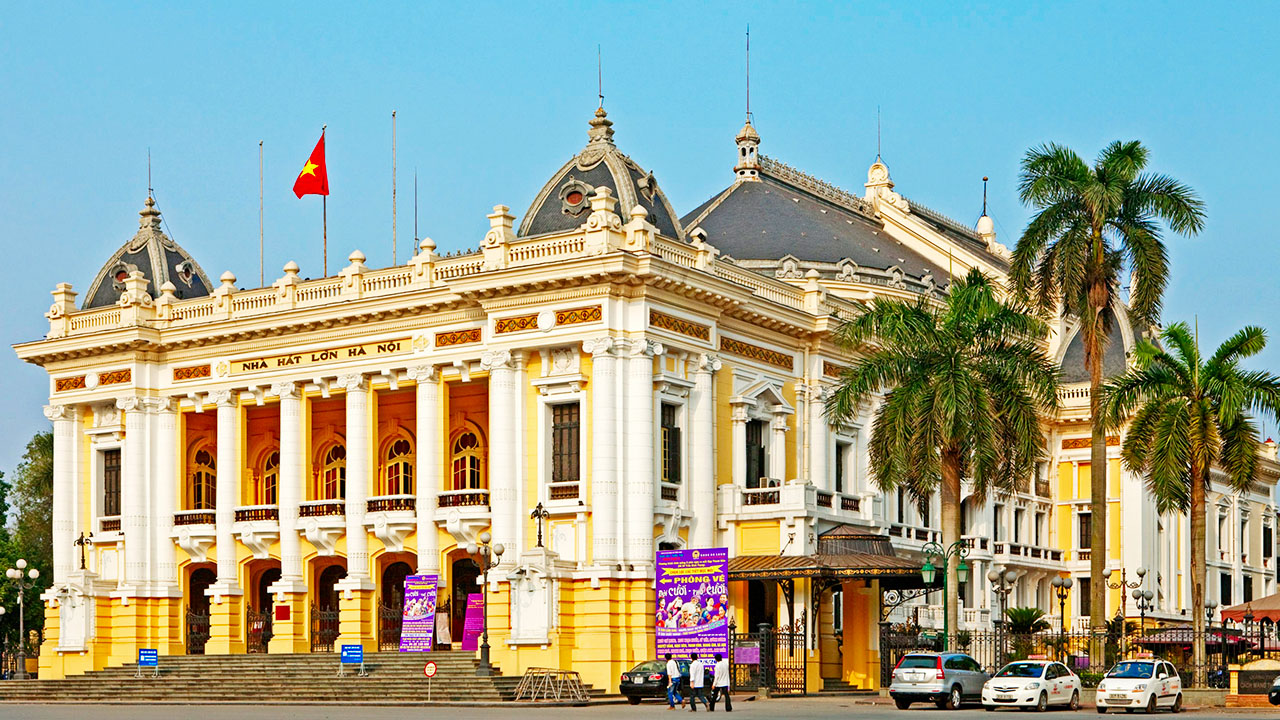
Along the length of Trang Tien Street, one can observe a collection of standout buildings showcasing an eclectic array of architectural styles, many of which embody the historical layers that define Hanoi. The combination of colonial influence and traditional Vietnamese elements speaks volumes about the city’s narrative and its transformation over time.
- Hanoi Opera House: As noted earlier, this striking example of neoclassical architecture stands prominently at the beginning of Trang Tien Street. Its symmetrical design and grand columns evoke a sense of elegance and grandeur, reminiscent of the historical significance it carries. The Opera House has not only served as a vibrant cultural venue but also as a symbol of Hanoi’s artistic beat, combining European architectural aesthetics with Vietnamese cultural identity.
- Vietnam National Museum of History: This inviting structure also showcases French colonial architecture, marked by large arches and grand entryways. Walking into the museum feels like stepping back into a time when opulent design defined public buildings. The museum’s interiors reflect its purpose: to inform and educate about Vietnam’s vast historical offerings, enhanced by its romantic neo-Romanesque style.
- Trang Tien Plaza: Designed with a modern aesthetic yet pulling from traditional influences, Trang Tien Plaza stands as a beacon of contemporary commercial architecture on this historic street. The design harmonizes glass and steel, inviting light while ensuring functionality. It showcases how modern architecture can be embraced while still tethering itself to local heritage through its choice of materials and classic forms.
- State Bank of Vietnam: Originally constructed in 1928, this building displays a fusion of neoclassical and Art Deco elements. Its imposing architecture symbolizes the financial heartbeat of Vietnam while reflecting the layered complexity of the nation’s colonial influence. The grandiosity of the building enhances the street’s vibrancy, reminding visitors of the evolving economic landscape that shaped the country.
The architectural diversity found along Trang Tien Street narrates a story of evolution, marked by convergence and divergence between styles. This beautiful amalgamation highlights the city’s growth, deepening the appreciation for both modern innovations and enduring historical favorites.
Cultural Institutions and Their Roles on Trang Tien Street

While the architectural riches of Trang Tien Street are captivating, it is the cultural institutions that truly animate this thoroughfare. These establishments aim to foster cultural exchange, artistic expression, and education, positioning the street as a pivotal force in shaping Hanoi’s rich social landscape.
- Hanoi Opera House: More than just a performance venue, the Opera House is an institution of cultural significance. It regularly hosts international and local performances, ranging from ballet to traditional Vietnamese theatre. Each show contributes to the public’s awareness of artistic expressions, allowing profound connections to form between performers and audiences, reinforcing the cultural spirit of Hanoi.
- Vietnam National Museum of History: This museum’s role extends beyond preservation; it actively promotes historical education for both locals and tourists. Through exhibitions, workshops, and public programs, it plays a vital role in enhancing cultural understanding and appreciation of Vietnam’s rich heritage. It acts as an anchor point for storytelling, ensuring that history remains relevant while inviting new narratives shaped by contemporary experiences.
- French Cultural Centre, L’espace: This institution regularly hosts art exhibitions, film screenings, and cultural exchanges aimed at building cross-cultural dialogue. By bridging Vietnamese culture with that of France, it serves as a space for artistic collaboration, facilitating interactions that go beyond mere transactions they become pathways for understanding and sharing traditions.
- Cultural Festivals and Community Gatherings: The street often becomes a venue for festivals that celebrate both historical and contemporary Vietnamese culture. Events like the Lunar New Year (Tết) and the Mid-Autumn Festival, which include traditional performances, arts, and culinary showcases, transform Trang Tien into a buzzing marketplace of culture. This community involvement reinforces the shared experiences that define the neighborhood’s identity, building cohesion among residents and visitors alike.
Together, these cultural institutions enliven Trang Tien Street, offering visitors an immersive experience and a deeper understanding of Vietnamese customs, traditions, and artistic life. They allow the street to flourish as a cultural hub where narratives are shared, and the past converses with the present.
Shopping and Dining Experiences on Trang Tien Street

Trang Tien Street is a paradise for both shopping aficionados and food lovers. Its blend of luxury boutiques and charming eateries creates a shopping and dining experience that honors Hanoi’s unique traditions while embracing modern trends. This dynamic environment not only highlights the street’s commercial allure but also provides an inviting atmosphere for visitors seeking a taste of the local culture.
- High-End Retail: The northern stretch of Trang Tien is home to luxury retail brands, including international fashion houses and Vietnamese designers. Stores carry collections from Dior, Louis Vuitton, and more, providing shoppers access to the latest trends in luxury fashion. This concentration of high-end retail options positions this street as a go-to destination for fashion enthusiasts, making it comparable to the renowned Champs-Élysées in Paris a hub where elegance meets style.
- Local Boutiques: Alongside luxury brands, local boutiques add a unique character to the street. These shops offer traditional Vietnamese garments such as ao dai, silk products, and handicrafts. Shopping in these local stores feels like embarking on a treasure hunt, with each piece representing the craftsmanship and artistry of Vietnamese culture. Visitors taking this journey often leave with unique souvenirs that tell stories of their travels.
- Dining Experiences: Following a successful shopping spree, visitors can satiate their appetite at various eateries lining the street. Notable spots include Cafe Giang, famous for its heavenly cà phê trứng or egg coffee, a must-try for coffee lovers. The marriage of egg, coffee, and condensed milk creates a delicate balance of flavors worth savoring.
- Street Food Culture: Venturing slightly off the main thoroughfare, food vendors offer street delicacies that reflect Vietnam’s vibrant culinary culture. From pho to banh mi, customers can indulge in quick bites that sparkle with flavors from spices and fresh ingredients. This informal dining experience is akin to sharing a meal around a lively family table, where flavors showcase the essence of Vietnamese hospitality.
By combining luxury shopping options with authentic local dining experiences, Trang Tien Street stands out as an all-encompassing destination that promises satisfaction on multiple levels. It is here where the spirit of commerce harmonizes with the warmth of Vietnamese gastronomy, inviting visitors to partake in the street’s vibrant atmosphere while enjoying every moment.
Top Retail Outlets and Their Offerings
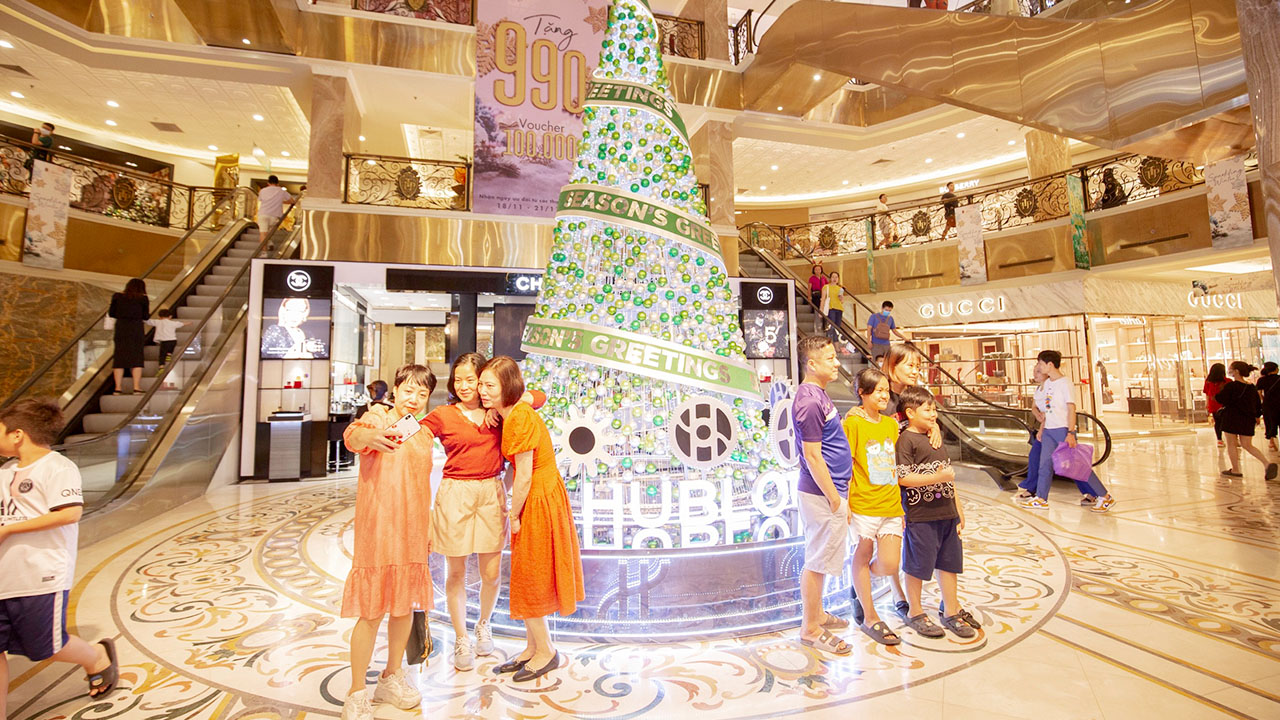
Certainly, Trang Tien Street is a bustling hotspot for retail therapy, with a diverse array of shops that cater to varying tastes and budgets. In this section, we present an overview of the top retail outlets along the street, highlighting their offerings and unique characteristics.
| Retail Outlet | Type | Notable Brands/Products | Unique Features |
|---|---|---|---|
| Trang Tien Plaza | Shopping Mall | Luxury brands, Vietnamese goods | Elegant design, luxury shopping combined with dining |
| The Blue Sky | Fashion Boutique | Local and international fashion | Emphasis on traditional Vietnamese attire |
| Vincom Center | Shopping Mall | A mix of local and international brands | A prominent shopping destination with multiple floors |
| Thang Long Silk | Specialty Store | High-quality silk products | Dedicated to showcasing traditional silk craftsmanship |
| Hanoi Elegance | Souvenir Shop | Handmade crafts, Vietnamese souvenirs | Curated collection of unique gifts and local handicrafts |
These retail outlets provide a vibrant shopping experience that enhances the allure of Trang Tien Street, contributing to its reputation as a major commercial district in Hanoi.
Popular Restaurants and Cafes to Visit
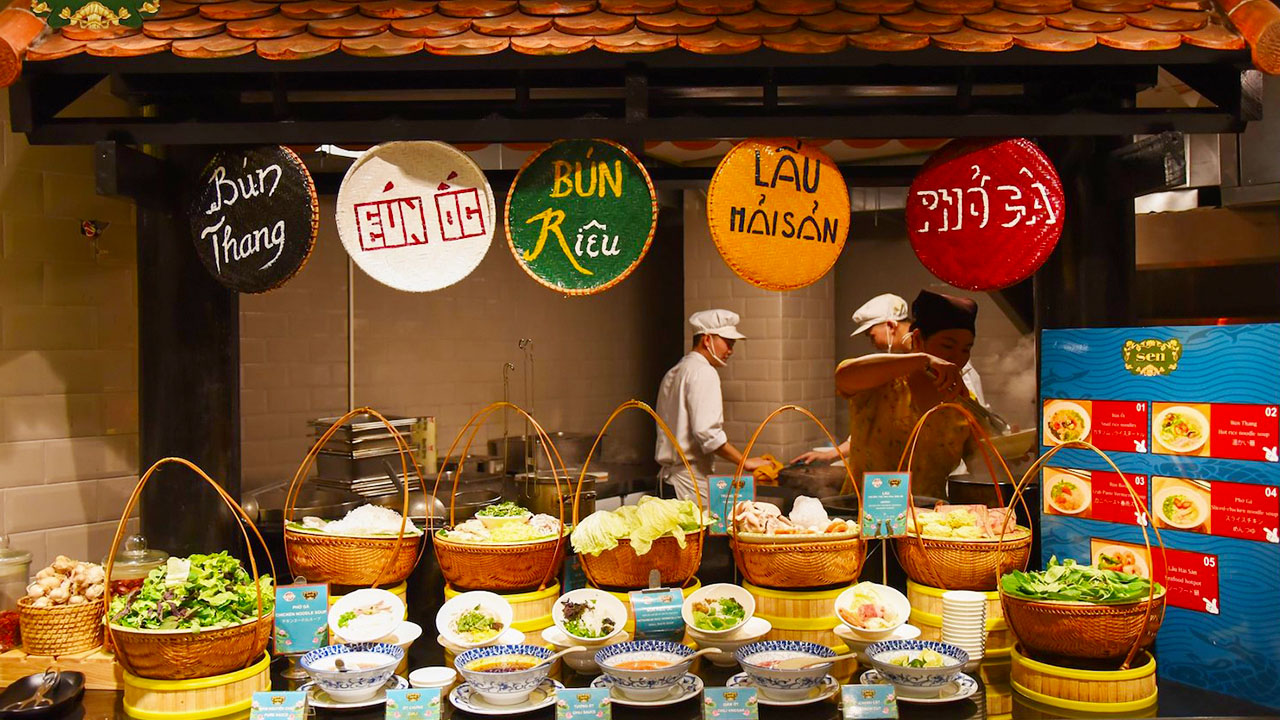
As the sun sets and the neon lights flicker on, Trang Tien Street transforms into a culinary haven, with numerous popular restaurants and cafes lining its path. The gastronomic offerings reflect Vietnam’s rich heritage while innovating contemporary flavors, allowing visitors to indulge in a truly delightful experience.
- The Moose & Roo Smokehouse: Located conveniently within reach for shoppers, this American-style restaurant is well-known for its smoked meats and hearty fare. The warm ambiance and friendly service have made it a popular choice for families and groups looking for a filling meal after exploring the street.
- Cafe Giang: Renowned for its unique take on egg coffee, this quaint cafe draws both locals and tourists seeking the flavor of traditional Vietnamese coffee. The cozy atmosphere and delicious concoctions are often punctuated by the hustle and bustle of the street, creating a vibrant dining experience perfect for perusing menus and people-watching.
- Cloud 9: Taking dining to new heights, Cloud 9 is located on the ninth floor of a nearby building, providing panoramic views of the city skyline. The restaurant specializes in authentic Vietnamese dishes, allowing diners to savor exquisite flavors while enjoying the breathtaking scenery of Hanoi below.
- Hanoi Social Club: A popular spot among locals and expats, this eclectic venue invokes a sense of community through both its food and ambiance. The menu features vegetarian and vegan options, accompanied by weekly live music events that create an inviting social atmosphere.
- Sen 60 Ly Thai To: Just off Trang Tien, this upscale buffet restaurant offers an extensive array of Vietnamese and seafood dishes. Its elegant dining experience provides visitors with a chance to taste regional specialties in a refined setting, making it an exceptional choice for celebratory dinners.
These restaurants and cafes, steeped in flavor and ambiance, enhance the experience of visiting Trang Tien Street. Each culinary destination offers something distinct, rendering it a must-visit area for anyone seeking the rich tastes of Vietnamese cuisine.
Events and Festivals Celebrated on Trang Tien Street
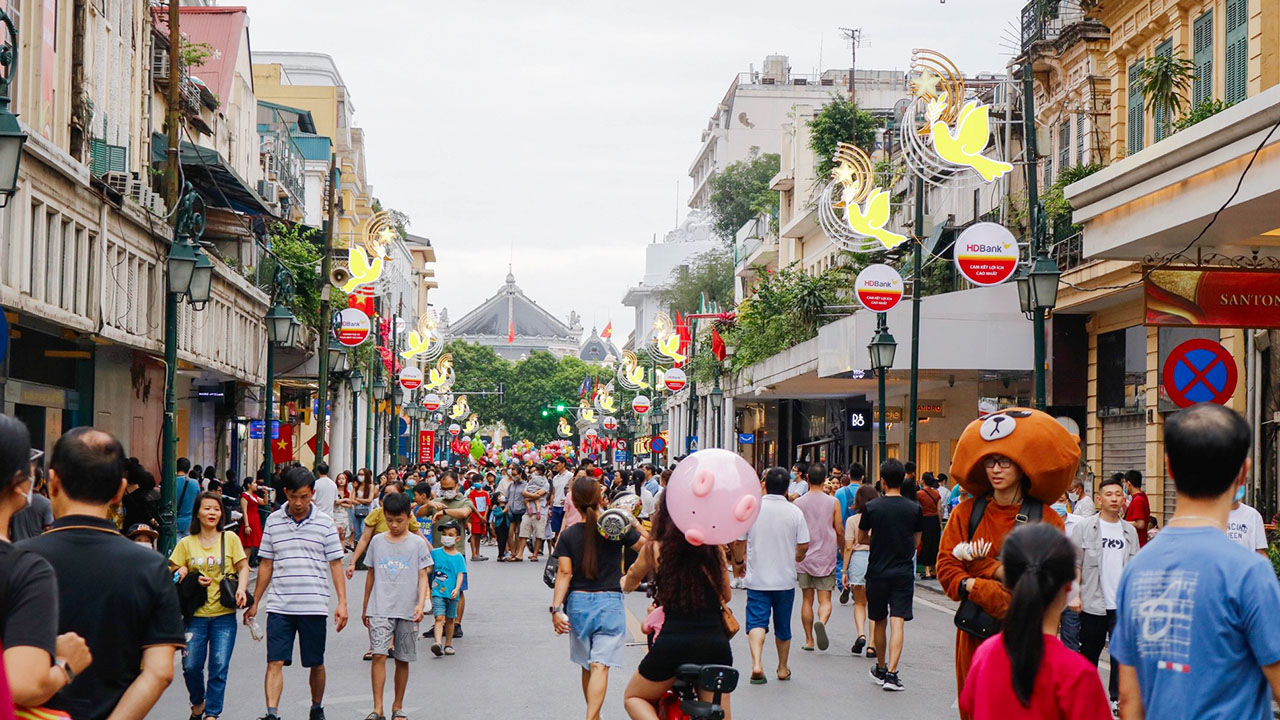
Throughout the year, Trang Tien Street becomes a vibrant focal point for several events and festivals that celebrate Hanoi’s rich cultural heritage. This lively thoroughfare welcomes locals and tourists alike to partake in joyous celebrations, ranging from traditional festivals to modern exhibitions.
- Lunar New Year (Tết): Representing the most significant celebration in Vietnamese culture, Tết transforms Trang Tien Street into a festive spectacle with decorative lanterns, traditional performances, and sumptuous food stalls. The street becomes a gathering place for families and friends, creating a sense of unity that echoes the festive spirit of the New Year.
- Mid-Autumn Festival: Celebrated with fervor along Trang Tien, this festival brings joy to children and adults alike. The street is adorned with vibrant lantern displays, accompanied by vendors selling mooncakes and traditional snacks. Families gather to enjoy the festivities, relishing each moment as they share stories and partake in traditional games.
- Hanoi International Film Festival: Held every two years, this event spills out onto the streets, with film screenings and cultural performances showcasing both local and international talent. Participants experience the rich cinematic culture of Vietnam, fostering community engagement and appreciation for the arts.
- Cultural Exhibitions: Regular art exhibitions and performances occur along this significant street, offering a space for local artists to showcase their talent and share their stories. This creative platform deepens appreciation for traditional and contemporary Vietnamese culture, inviting audiences to immerse themselves in artistic expressions.
- Weekend Walking Street: During weekends, sections of Trang Tien Street are closed off to cars, transforming it into a bustling pedestrian zone filled with street performers, artisans, and food vendors. The atmosphere buzzes with energy, allowing visitors to explore the colorful showcases of local culture and cuisine while embracing the vibrancy of the community.
Through these vibrant events, Trang Tien Street serves as a bridge connecting past and present, tradition and modernity. Each celebration encapsulates the spirit of Hanoi, inviting visitors to revel in the joy of cultural exchange while preserving the lasting legacy of Vietnamese customs.
Annual Festivals and Their Cultural Importance
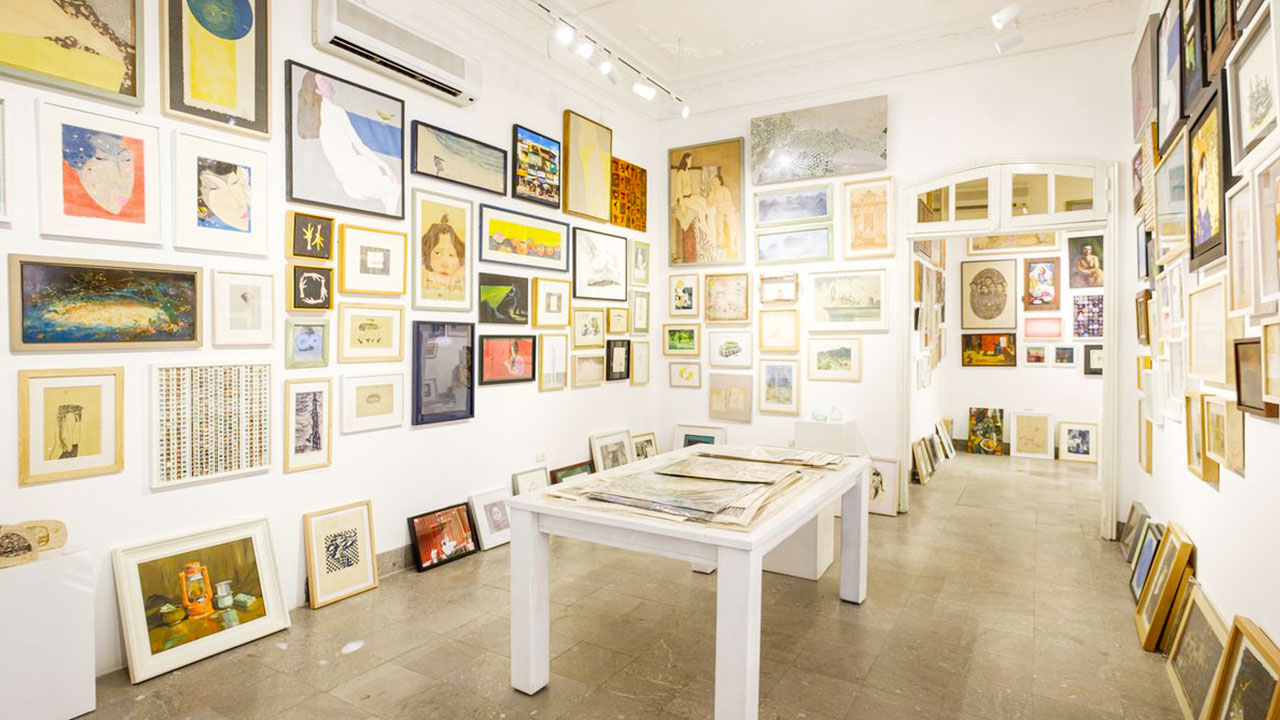
Annual festivals celebrated on Trang Tien Street embody the rich cultural tapestry of Vietnam, merging historical significance with contemporary celebrations. These events play a crucial role in strengthening community ties and fostering cultural pride among locals.
- Hanoi Opera House Celebrations: Regular events at this esteemed venue often coincide with significant cultural festivities. The Opera House welcomes various performances that showcase classical music, traditional theatre, and modern dance, allowing attendees to experience the arts first-hand and witness the preservation of Vietnamese heritage through performance.
- Tet Nguyen Dan (Vietnamese Lunar New Year): The celebration of Tết is unequivocally vital to the local community, marking a time of renewal and family gatherings. Along Trang Tien Street, families come together to honor ancestors and engage in cultural activities. It reflects the importance of familial bonds while inviting everyone to indulge in traditional food, rituals, and the decorations that breathe life into the city.
- Street Walks and Cultural Tours: These organized events serve as a means to educate both locals and tourists about the rich history surrounding Trang Tien. These guided tours highlight historical landmarks while offering insights into the cultural significance of various traditions, thereby enhancing the appreciation for Hanoi’s profound heritage.
- New Year Celebrations: With public gatherings enhanced by fireworks and traditional performances, ringing in the New Year along Trang Tien Street becomes a community affair. The celebrations foster a sense of unity, as people from all walks of life come together to share in the joyous ambiance.
- Art Exhibitions and Public Gatherings: Numerous public gatherings showcasing local artists occur year-round, promoting cultural expression and creativity within the community. From local crafts to performances, these gatherings invite participation, further deepening the relationship between the vendors and the community.
In celebrating these festivals, Trang Tien Street provides both a platform for cultural exchange and a reflection of the stories that unite the residents of Hanoi. Each festival is a reminder of the significance of tradition and continuity in the fast-paced world, serving as a living narrative that fosters cultural richness and social cohesion.
Special Events and Public Gatherings
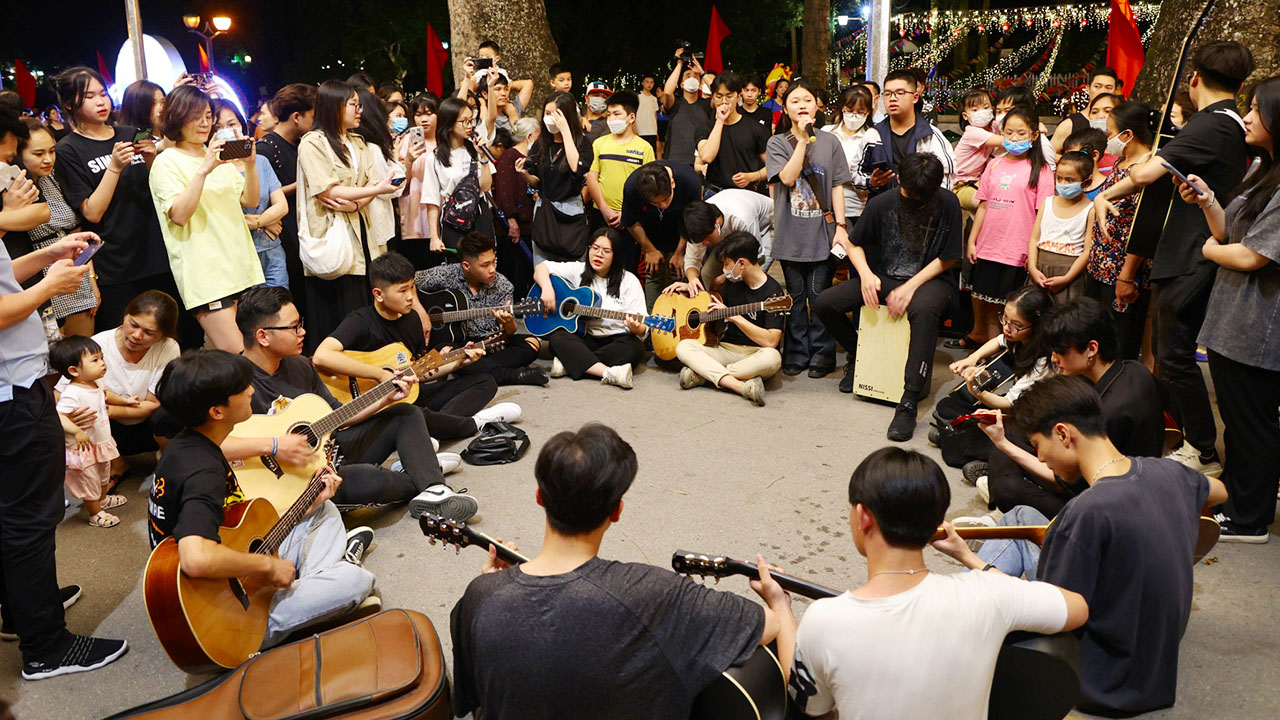
Beyond festivals, Trang Tien Street serves as an essential assembly point for various special events and public gatherings that reflect the dynamic spirit of Hanoi. These occasions invite participation and engagement, weaving a rich tapestry of local culture and collective joy.
- Cultural Performances: Special events featuring traditional dance, music, and storytelling grace the street, inviting locals and tourists alike to revel in the cultural heritage of Vietnam. By engaging with performers, attendees gain a deeper understanding of the narratives that form the backbone of Vietnamese culture, rich with beauty and diversity.
- Art Fairs and Crafts Markets: These lively gatherings celebrate the craftsmanship of local artisans who come together to showcase their creations, from pottery to intricate textiles. Visitors have the opportunity to observe artisans at work, learn about traditional techniques, and purchase handmade goods, enriching their connection to the local culture.
- Charity Events: Throughout the year, Trang Tien Street also becomes a hub for charity events and fundraising initiatives. Public gatherings focused on social awareness bring communities together, promoting causes that resonate deeply within the society. Such events foster unity and highlight the collective commitment to uplifting others.
- Public Discussions and Debates: Educational talks and discussions around pressing issues are often organized on Trang Tien Street, reinforcing its role as a cultural and intellectual hub. By inviting voices from various backgrounds, these events encourage open dialogue and promote community engagement through shared responsibilities.
- Seasonal Celebrations: Seasonal festivities, aligned with the changing year, bring thematic decorations, local delicacies, and entertainment specific to the time. For instance, cherry blossoms might adorn the street in spring, while colorful lanterns welcome the Mid-Autumn Festival, showcasing the vibrancy that nature and tradition bring.
Through these special events and gatherings, Trang Tien Street fosters a sense of community and collective identity. It transcends its physical space, becoming a platform for outreach, dialogue, and creativity, while serving as a reminder of the unity that binds diverse cultures together.
Transportation and Accessibility to Trang Tien Street
Transporting oneself to Trang Tien Street is both convenient and efficient, thanks to its prime location in the heart of Hanoi. Accessibility is an essential feature of this vibrant area, ensuring that visitors encounter no barriers when setting out to explore.
- Public Transportation: The public transportation system in Hanoi is extensive, with numerous bus lines servicing the vicinity of Trang Tien. Buses connect to all major areas of the city, providing an economical way for locals and visitors to navigate through Hanoi. Reliable and frequent, buses often operate at minimal costs, making them an attractive option for those looking to explore the city’s historical and cultural gems.
- Taxis and Ride-Hailing Services: Taxis are readily available throughout the city, providing convenient door-to-door service to Trang Tien Street. Ride-hailing apps such as Grab have gained immense popularity, making it easy for anyone to request a ride with just a few taps on their phone. For those who prefer personalized transportation, these services represent a comfortable and efficient means to reach their desired destination.
- Walking: Due to its pedestrian-friendly environment, many attractions including Hoan Kiem Lake and the Old Quarter, are within walking distance from Trang Tien Street. One can leisurely wander through the charming streetscape, taking in the sights, sounds, and smells of Hanoi. A casual stroll encourages exploration and offers an opportunity to discover hidden gems along the way.
- Accessibility: Trang Tien Street has made strides in ensuring it is accessible to everyone, regardless of mobility challenges. With ramps and elevators at key points throughout the area, visitors of all abilities can enjoy the street’s offerings without obstacles. Every effort is made to create an inclusive environment, allowing everyone to appreciate the vibrant life and culture present.
- Parking Facilities: For those who choose to drive, the area offers parking options, including a basement parking garage for visitors’ convenience. This additional service enhances accessibility for travelers who prefer the comfort of their vehicles while navigating through the city.
In summary, Trang Tien Street excels in transportation and accessibility, providing visitors with a seamless experience that encourages exploration. The ease of reaching this historical treasure trove enhances its appeal as a must-visit destination in Hanoi.
Public Transport Options and Accessibility
Hanoi’s public transport system plays a vital role in enabling easy access to Trang Tien Street and its surrounding attractions. Below is a detailed overview of the various public transport options that visitors can utilize to navigate Hanoi effectively.
| Transport Type | Services Offered | Key Features | Cost |
|---|---|---|---|
| City Buses | Extensive bus routes serving nearby areas | Affordable, regular schedules | Typically 7,000 – 10,000 VND |
| Taxis | Metered rides throughout the city | Convenient for door-to-door transport | Varies based on distance |
| Ride-Hailing Apps | On-demand car services (Grab, Be) | Easy-to-use mobile applications | Similar to taxi fares |
| Bicycles | Standard bike rentals or guided bike tours | Eco-friendly option for leisurely exploring | Varies, usually affordable |
| Walking | Pedestrian path from nearby neighborhoods | Scenic stroll to enjoy the street’s charm | Free |
These services enable visitors to navigate the colorful streets of Hanoi with ease, ensuring a fulfilling experience at each stop along the journey.
Walking and Biking Routes Around Trang Tien Street
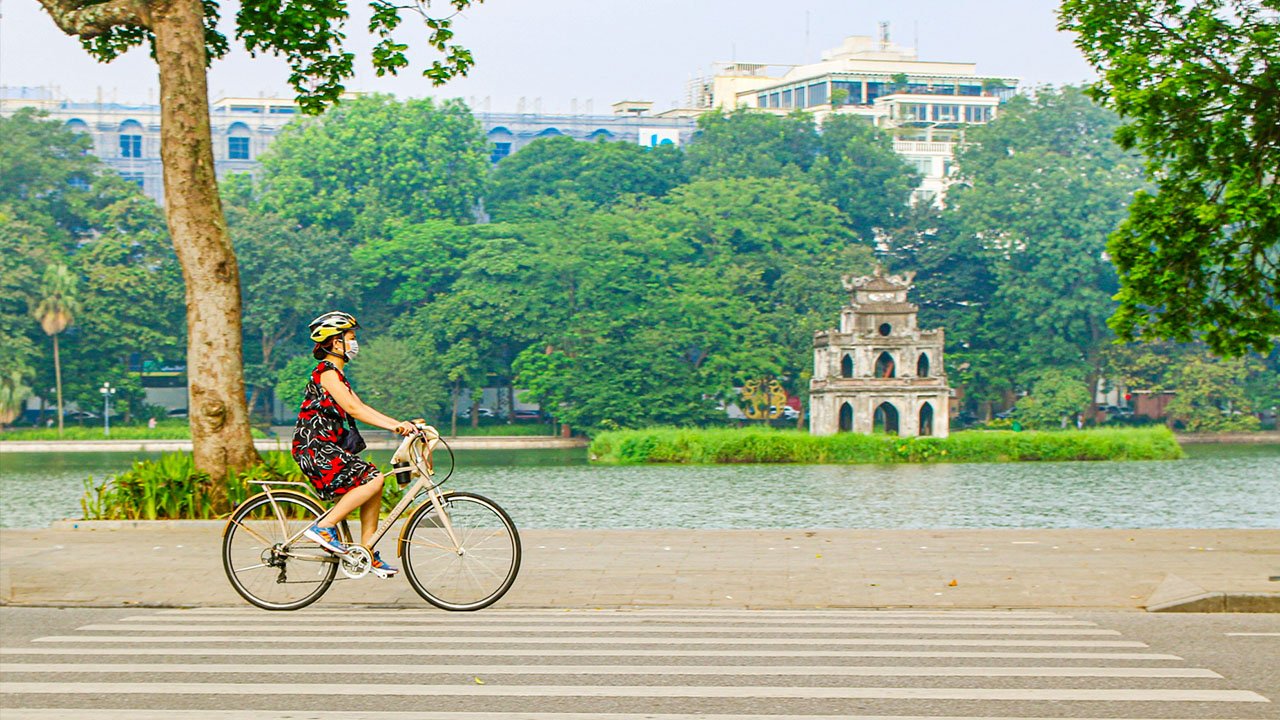
In addition to its comprehensive transport options, Trang Tien Street is also designed to accommodate walking and biking enthusiasts. The environment encourages exploration, with several routes that enhance the visitor experience.
- Walking Routes: Visitors can start their journey at the Hanoi Opera House and leisurely stroll down Trang Tien Street toward Hoan Kiem Lake. This walk showcases the picturesque streets lined with historical architecture, vibrant shops, and lively cafes, inviting exploration at every turn. The pace allows for pauses to admire both modern and colonial elements that characterize this iconic location.
- Biking Expeditions: While biking is not the primary mode of transport in this bustling area, designated bike lanes exist in some surrounding areas. Cycling can be an exhilarating way to explore the nearby Old Quarter, offering visitors an up-close experience of Hanoi’s vibrant street life. Various bike rental shops are available, providing easy access for those seeking a unique way to traverse the city.
- Scenic Routes: Taking a path along Hoan Kiem Lake offers a picturesque backdrop for walkers and bikers. The breezy environment, crowned with lush greenery and tranquil water, provides a refreshing contrast against the urban landscape. This route is particularly delightful during the early morning or late evening when the weather is cooler, and locals often come out for their daily exercises.
- Accessible Walking Paths: Trang Tien Street is designed with pedestrian-friendly features, making it easy for individuals of varying mobility levels to navigate the area. Sidewalks are well-maintained, and pedestrian crossings are clearly marked, ensuring safety while exploring.
Overall, the well-connected walking and biking routes around Trang Tien Street invite visitors to immerse themselves fully in the vibrant atmosphere of Hanoi. They illustrate how the city embraces movement, accessibility, and a rich tapestry of experiences waiting to be discovered.
Local Insights and Tips for Visitors to Trang Tien Street

As you prepare for a visit to Trang Tien Street, gathering local insights can enrich your experience and ensure a deeper appreciation of this vibrant area. Here are some tips to guide your exploration as you delve into the heart of Hanoi’s cultural and culinary offerings.
- Timing: To fully absorb the bustling atmosphere, visiting during the evening is highly recommended. Weekends transform the street into a lively pedestrian zone filled with street performances, local vendors, and an energetic ambiance. It’s the perfect time to engage with the local culture and enjoy the street’s enchanting glow after dark.
- Food Recommendations: Don’t miss out on sampling local delicacies, particularly the famous Trang Tien Ice Cream (35 Tràng Tiền, Hoàn Kiếm, Hà Nội). Known for its unique flavors, this cold treat has become a classic must-try for visitors. Explore nearby eateries and indulge in seasonal specialties, ensuring you experience a range of authentic tastes that showcase Vietnamese cuisine.
- Engaging with Locals: A huge part of the experience involves interacting with local vendors and shopkeepers. Taking the time to ask questions about their products or stories about the area enhances the connection between visitors and the community. This approach often leads to memorable interactions and insights into the local way of life.
- Safety Tips: While Trang Tien Street is generally safe for tourists, staying vigilant, especially in crowded areas, is advisable. Keep your belongings secure and be cautious while navigating through busy pedestrian zones. Engaging in guided tours can enhance your experience while providing an extra layer of security in unfamiliar surroundings.
- Explore Beyond the Main Street: While Trang Tien itself is rich with attractions, do consider exploring the side streets and alleyways leading off this main drag. Many hidden gems, including delicious street food stalls and charming shops, await discovery away from the busier thoroughfare. Engaging in this exploration offers a more intimate glimpse into the local culture.
With these insights and tips, you are well-equipped to appreciate the diverse offerings along Trang Tien Street, ensuring an enriching visit marked by authentic experiences and local connections.
Hidden Gems and Lesser-Known Attractions
Despite its prominence, Trang Tien Street has several hidden gems and lesser-known attractions that may pique the curiosity of first-time visitors. Often overlooked, these places contribute significantly to the cultural richness of the area and are worth delving into.
- Artisan Shops: In the small lanes branching off from Trang Tien, artisan shops showcase handcrafted products ranging from pottery to traditional masks. These local businesses offer a chance to meet craftsmen and learn about their techniques, creating an opportunity to better understand the artistry behind Vietnamese craftsmanship.
- Cafes with Character: Venturing beyond popular spots, patrons can discover quaint cafes that exude charm and creativity. Many cafes serve traditional Vietnamese coffee paired with delectable pastries, creating a peaceful oasis amid the hustle and bustle of the street life. These hidden gems allow for relaxation while indulging in the local delicacies.
- Cultural Centers and Galleries: Smaller galleries often host exhibitions featuring local artists, bringing to light the talent that thrives within the community. These cultural centers frequently participate in art walks or open exhibitions that provide visitors with chances to engage with artists and appreciate contemporary Vietnamese art.
- Historic Architecture: While the more famous buildings draw attention, exploring lesser-known structures around Trang Tien reveals stunning colonial-era architecture that whispers stories of the past. Each building possesses its unique character and historical context, adding depth to the rich architectural narrative of the area.
- Street Performers: Investing time in watching talented street performers can lead to unexpected yet delightful experiences. Musicians, dancers, and artists often showcase their crafts along Trang Tien, adding a layer of entertainment to the vibrant atmosphere, while also supporting local talent.
By venturing beyond the surface of Trang Tien Street, visitors can uncover unique experiences that deepen their understanding of the locale’s culture and history. These hidden gems remind us that every corner often holds a story worth discovering, enriching the overall experience of exploring Hanoi.
Recommendations for First-Time Visitors
For first-time visitors to Trang Tien Street, navigating this vibrant area can be both exciting and overwhelming. Here are some tailored recommendations to ensure an enjoyable and fulfilling experience, allowing you to make the most of your time in Hanoi.
- Plan Your Itinerary: Given the breadth of experiences available, consider planning an itinerary to maximize your time on Trang Tien Street. Create a list of must-visit shops, restaurants, and cultural institutions, and allocate time to fully experience each location without feeling rushed. This approach allows for deeper exploration and meaningful interactions.
- Engage with Guided Tours: For newcomers unfamiliar with the area, participating in guided tours can enhance the experience. Knowledgeable guides provide context, insight, and historical anecdotes about different landmarks, enriching your visit with a more profound appreciation for the street’s significance.
- Sample Various Cuisines: Don’t restrict yourself to just one restaurant or café; instead, embrace the diverse culinary offerings. Branch out and try street food snacks, local specialties, and gourmet dining options to gain a holistic perspective on Vietnamese cuisine. Eating your way through the street creates memorable experiences and flavors that linger long after your visit.
- Capture the Moments: Trang Tien Street offers an array of picturesque backdrops, making it an ideal place for photography. From the architectural elegance of the Opera House to lively street scenes, be sure to capture candid moments and stunning views. These photographs will allow you to relive your journey and share your experiences with others.
- Be Open to Spontaneity: While it’s essential to have a plan, some of the best experiences arise from spontaneous moments or off-the-beaten-path discoveries. Don’t hesitate to explore different alleys or engage with locals. Each interaction has the potential to lead to hidden gems, unique souvenirs, or culinary delights that create lasting memories.
By utilizing these recommendations, first-time visitors to Trang Tien Street can foster authentic experiences that resonate long after their time in Hanoi. Each visit tells a story; by remaining open and engaged, newcomers will create their unique narratives within the dynamic landscape of this historic street.
Conclusion
In the grand mosaic of Hanoi, Trang Tien Street stands out as a vibrant thread woven through the fabric of the city’s history, culture, and community. From its origins as a colonial thoroughfare to its current role as a lively commercial and cultural hub, this street encapsulates the essence of Vietnam’s journey toward independence, resilience, and growth.
The layers of history embedded in the bricks and mortar of its buildings speak volumes, each landmark evoking memories of revolutionary fervor, artistic expression, and the rich traditions that define Vietnamese culture. As we have explored the bustling shopping avenues and serene cafes, we’ve also uncovered the historical significance underpinning each corner and alley, allowing us to appreciate the resilience and spirit of the people who have inhabited this space for centuries.
Through the festivals and events that grace this street, we see a community vibrantly alive, marked by generations of cultural exchanges and collective memories. These gatherings forge connections among individuals and echo the stories that continue to shape Hanoi’s dynamic identity. The street serves not only as a stage for festivities but also as a refuge where people come together to build lasting relationships with one another.
As visitors traverse the avenues of Trang Tien, they are invited to immerse themselves in a rich blend of experiences from savoring culinary delights to engaging with local artists and discovering hidden gems that speak to the heart of this community. The warmth of Vietnamese hospitality, the call of its historical significance, and the vibrancy of its modern life make Trang Tien Street an indelible part of Hanoi’s rich narrative.
Therefore, as we leave our footprints upon this storied street, let us savor the memories created and the connections formed, sure that the essence of Trang Tien will linger long after we depart. May each visit inspire a deep appreciation for the cultural richness that thrives within its bounds, reminding us that every corner of this street carries a tale worth telling.


